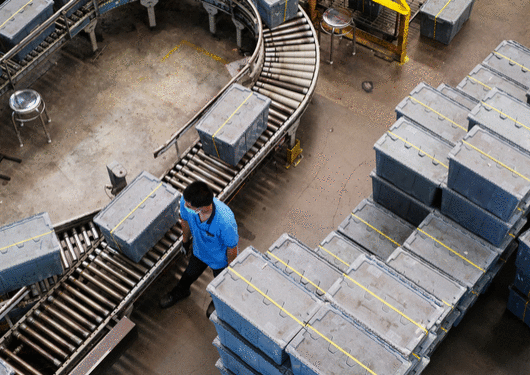
There's no better proof of that assertion than the announcement of Target Restock. The big-box giant recently unveiled a service that provides next-business-day delivery of a box full of assorted household essentials, for a flat shipping fee of $4.99. Tested first with company employees, the service debuts this summer in the Minneapolis area, near Target's headquarters, and will initially be available only to Target REDcard holders. But it’s likely to spread nationwide shortly thereafter.
The concept behind Target Restock erases the line between brick-and-mortar and e-commerce fulfillment. In fact, it necessitates the use of store shelves as a source for product ordered online. In the process, stores become warehouses, and store employees add picking and packing to their list of duties.
The merging of online and physical store fulfillment began when omnichannel retailers discovered that it was too expensive to maintain separate distribution centers for those two order streams. Now, the barrier is being removed within the stores themselves.
Target’s new program is a direct answer to Amazon.com’s Prime Pantry service, offering home delivery of grocery and household essentials in everyday sizes at a flat fee of $5.99 per box. (Some items qualify for free shipping.) Prime Pantry is part of a multi-front assault by Amazon in the grocery wars, which also includes the opening of brick-and-mortar stores in select locations, and Amazon’s announced acquisition of the Whole Foods grocery chain. And both Amazon and Target are competing against Instacart, which provides same-day home delivery of groceries and household items from multiple physical retailers.
Retailers and e-tailers alike are engaged in a race to provide maximum speed and convenience to the online consumer. In many cases, however, they can’t achieve that goal through traditional distribution centers, especially if such facilities are located outside major population centers. Better to fulfill directly from stores, which might be only a few blocks from the online shopper.
Target Restock represents the retailer’s attempt to assert tighter control over its home delivery arm, says Dan Neiweem, co-founder and principal of the business consulting firm Avionos. In relying on a third party such as Instacart, Target “can’t control the level of quality of service being provided,” he said. And a bad delivery experience, or loss of a shipment en route, reflects poorly on the retail brand, not the deliverer.
Neiweem says Target will be feeling its way toward a service that provides a consistent, reliable supply of fresh product, beginning with next-day delivery. Over the coming months, it’s likely to begin shrinking that timeline, with an eye toward offering same-day delivery tied to specific times. Initial forays into the same-day arena might start with products for which a customer has an urgent need, possibly delivered by ride-share services such as Uber and Lyft. From there, Target can begin expanding the range of products and locations that are eligible for same-day delivery.
In most instances, Target will need to rely on stock in its stores. The advantage of such an approach is proximity to the customer. The potential disadvantage is the possibility of stockouts, which can drive shoppers to another online provider.
One solution is to draw from multiple stores to fill a given order. But that method can only work if the locations are reasonably close to one another. Moreover, Target boosts its cost to serve when it has to draw some of the products that go into a Restock box from other stores.
Another possibility is to mimic the Instacart model, by offering the online shopper substitutions for products that are out of stock. Assuming the customer is amenable, no additional fulfillment cost is generated. But if too many of the shopper’s desired brands aren’t available on a consistent basis, Target risks losing that individual’s business to a better-stocked rival. It becomes essential, therefore, to ensure the availability of product on the shelf, both for the walk-in shopper and the online buyer. Accurate demand planning, coupled with visibility of actual sales in both channels, becomes key.
The online experience makes it possible for Target and other retailers to learn in advance which products can be substituted, and which are deal-breakers for brand-loyal consumers. Neiweem says Target already has models for determining what the buyer is willing to accept, drawing in part on established services such as Instacart. “This is their opportunity to manage as closely as possible the best customer experience from end to end,” he says.
To make the whole system work, Target will have to enact changes within the stores, beginning with additional hires. It will need to draw on the resources of employees at checkout, customer service and department heads. Those individuals will be required to play new and more complex roles, as they strive to meet the needs of two distinct types of customers.
As services such as Target Restock and Prime Pantry take off, the convenience factor will drive an increasing number of grocery shoppers to the online channel, Neiweem predicts. “You’re going to see fewer and fewer people going into the stores to look for product.” Nevertheless, the need for an omnichannel strategy of fulfillment, where retail stores do double duty, isn’t going away anytime soon. The winners in this increasingly heated race will be those that can meld each aspect of fulfillment, from D.C.s to store shelves, into a single supply chain that serves every type of customer with equal levels of quality, reliability and efficiency.







